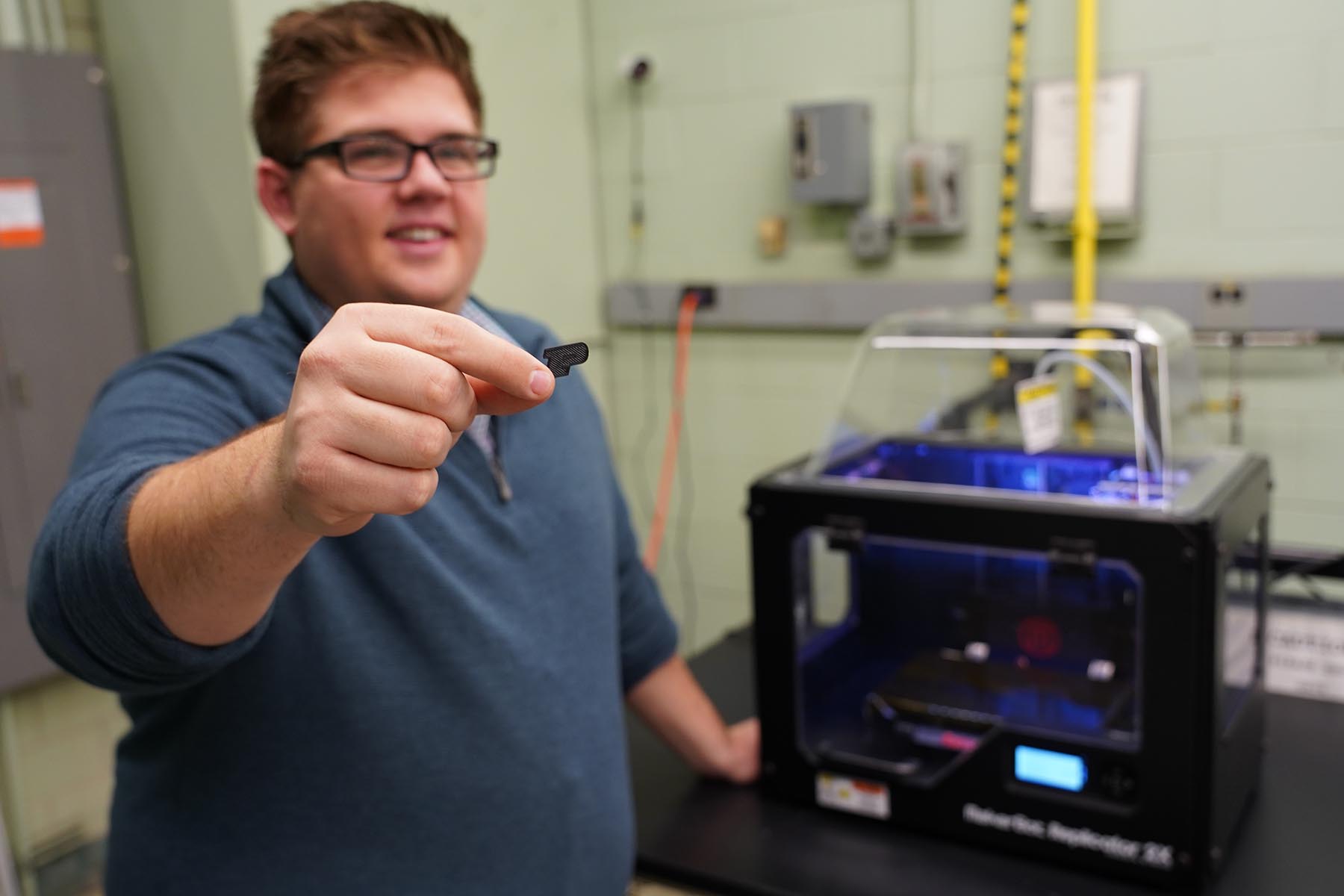3D printing brings safety and repeatability to energetic materials
“The settings for 3D printing common materials have been figured out for decades,” said Trevor Fleck, a Ph.D. student working on the project. “But with new materials, especially energetic materials, there are a lot of challenges.”
The most common form of 3D printing is called “fused deposition modeling,” where a reel of plastic filament is heated to its melting point, and then extruded onto a moving plate to form the desired shape. But energetic materials (pyrotechnics, explosives, and propellants) are extremely sensitive to changes in temperature. How can a 3D printer accurately deposit them?
“There are two breakthroughs here,” said Jeffrey Rhoads, professor of mechanical engineering, and principal investigator. “First, we embedded the reactive material, aluminum, in a fluoropolymer plastic. Second, we went through numerous experiments with the 3D printing settings to determine exactly what speeds, layer heights, and other criteria we can adjust to print this material safely and accurately.” Their successful research was published in the journal Additive Manufacturing.

“It’s all about finding that thermodynamic sweet spot,” said Fleck. “This enables the material to be deposited with the precision of a 3D printer, but also get the same reactivity as conventional methods.”
That level of precision means creating structures down to 200 microns thick, and 400 microns wide. There’s another advantage: safety. “We can make this process safer, because there’s less human interaction,” said Fleck. “We don’t have to be hands-on with the energetic material. We can set it up, hit the button, and leave the room, and the 3D printer does the work for us. And it’s repeatable; if we hit ‘go’ ten times, we get the same part ten times. Getting a consistent sample is vital for energetic materials.”
This collaborative effort includes energetic material expertise from professor Steve Son; Emre Gunduz (formerly of Purdue's Zucrow Labs, now at Naval Postgraduate School in Monterey, California); and printing expertise from professor George Chiu. The group have launched a startup company called Next Offset Solutions, which builds upon their previous experience with 2D inkjet-printed thermite, and 3D printing of extremely viscous materials.
“This is something that hasn’t been done before,” said Fleck. “It’s exciting to be able to print these complex geometries with new materials.”
Writer: Jared Pike, jaredpike@purdue.edu, 765-496-0374
Source: Jeff Rhoads, jfrhoads@purdue.edu, 765-494-5630
Please note: the print samples depicted in the photos/video are of inert material, for illustration purposes only.
ABSTRACT
Additive manufacturing of multifunctional reactive materials
Trevor J. Fleck, Allison K. Murray, Emre Gunduz, Steven F. Son, George T.-C. Chiu, Jeffrey F. Rhoads
Additive Manufacturing, Volume 17, October 2017, Pages 176-182 https://doi.org/10.1016/j.addma.2017.08.008
This paper demonstrates the ability to 3D print a fluoropolymer based energetic material which could be used as part of a multifunctional reactive structure. The work presented lays the technical foundation for the 3D printing of reactive materials using fusion based material extrusion. A reactive filament comprising of a polyvinylidene fluoride (PVDF) binder with 20% mass loading of aluminum (Al) was prepared using a commercial filament extruder and printed using a Makerbot Replicator 2X. Printing performance of the energetic samples was compared with standard 3D printing materials, with metrics including the bead-to-bead adhesion and surface quality of the printed samples. The reactivity and burning rates of the filaments and the printed samples were comparable. Differential scanning calorimetry and thermal gravimetric analysis showed that the onset temperature for the reactions was above 350 °C, which is well above the operation temperature of both the filament extruder and the fused deposition printer.
